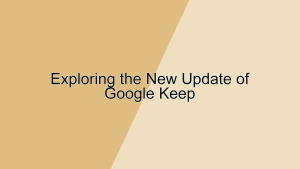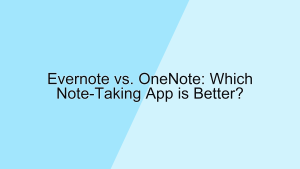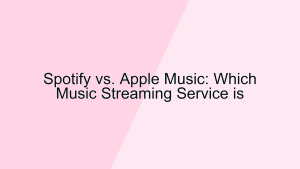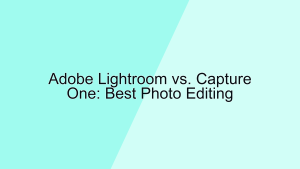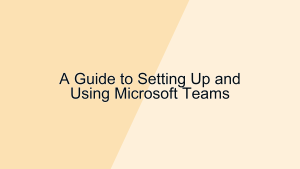In a world where remote work and virtual meetings have become the norm, choosing the right video conferencing app is crucial for businesses and individuals alike. Two of the most popular platforms in this space are Zoom and Google Meet. Both offer a range of features designed to facilitate effective communication, but they differ in various aspects. This article will compare Zoom and Google Meet across several key criteria to help you decide which app is the best fit for your video conferencing needs.
1. User Interface and Ease of Use
The user interface (UI) and ease of use are critical factors when considering a video conferencing app. A well-designed interface can make the experience smooth and intuitive for users.
- Zoom’s User Interface: Zoom features a clean and straightforward interface that is easy to navigate, making it accessible for users of all technical skill levels. The main dashboard provides quick access to key functions such as scheduling meetings, joining existing meetings, and managing contacts. For example, a teacher conducting online classes can easily schedule and start meetings with just a few clicks, ensuring that they can focus on teaching rather than technical issues. The in-meeting controls are also user-friendly, with options for screen sharing, recording, and breakout rooms clearly displayed. This simplicity and clarity help reduce the learning curve and make Zoom a popular choice for users needing a reliable and easy-to-use video conferencing solution.
- Google Meet’s User Interface: Google Meet offers a sleek and minimalist interface that integrates seamlessly with other Google services like Google Calendar and Gmail. This integration allows users to join meetings directly from their calendar or email, streamlining the process. For instance, a project manager can schedule a meeting in Google Calendar, and attendees can join with a single click from the calendar invite. The in-meeting controls in Google Meet are also intuitive, with options for screen sharing, recording, and adjusting settings easily accessible. The minimalist design ensures that users can navigate the app without distraction, making Google Meet a strong contender for those who prefer a streamlined and integrated video conferencing experience.
2. Features and Functionality
The range of features and functionality offered by a video conferencing app plays a significant role in its effectiveness and versatility. Let’s compare the features of Zoom and Google Meet.
- Zoom’s Features: Zoom is known for its robust feature set, which includes high-definition video and audio, screen sharing, and recording capabilities. One standout feature is the ability to create breakout rooms, allowing hosts to split participants into smaller groups for more focused discussions. For example, a company conducting a large training session can use breakout rooms for team-based activities, enhancing interaction and engagement. Zoom also offers virtual backgrounds, which can be useful for maintaining privacy or creating a professional appearance during meetings. Another notable feature is the waiting room, where hosts can control when participants join the meeting, adding an extra layer of security. These comprehensive features make Zoom a versatile tool for various use cases, from business meetings to virtual events.
- Google Meet’s Features: Google Meet offers a range of features that cater to both casual and professional users. It supports high-definition video and audio, with the added benefit of real-time captioning, which can improve accessibility for participants with hearing impairments. For example, during a multinational conference, real-time captioning can help non-native speakers better understand the conversation. Google Meet also allows for seamless integration with other Google applications, enabling users to join meetings directly from Google Calendar invites or Gmail. Additionally, Google Meet provides features like screen sharing, recording, and the ability to host large meetings with up to 250 participants in the paid version. The integration with Google’s ecosystem and the focus on accessibility make Google Meet a strong choice for users who rely heavily on Google services.
3. Security and Privacy
Security and privacy are paramount considerations for any video conferencing app, particularly for businesses handling sensitive information. Here’s how Zoom and Google Meet address these concerns.
- Zoom’s Security: Zoom has made significant strides in enhancing its security features following early criticisms. The app now offers end-to-end encryption for all meetings, ensuring that only participants have access to the content. For example, a legal firm discussing confidential client information can rest assured that their conversation is secure from unauthorized access. Zoom also includes security features like the waiting room and the ability to lock meetings once all participants have joined, preventing uninvited guests from entering. Additionally, meeting hosts can control participant permissions, such as who can share their screen or send messages, further enhancing security. These improvements make Zoom a reliable choice for users who prioritize robust security measures.
- Google Meet’s Security: Google Meet is built on the secure infrastructure of Google Cloud, offering strong security measures by default. The app encrypts all data in transit, ensuring that information shared during meetings is protected. For example, a healthcare provider conducting telehealth consultations can trust that patient information remains confidential. Google Meet also includes features like two-step verification and the ability to control who can join meetings, adding layers of security. The integration with Google Workspace means that security policies can be managed centrally, making it easier for IT administrators to enforce compliance across the organization. These comprehensive security measures make Google Meet a robust option for organizations with stringent security and privacy requirements.
4. Pricing and Plans
Cost is a crucial factor when selecting a video conferencing app, especially for businesses looking to manage expenses effectively. Let’s compare the pricing models of Zoom and Google Meet.
- Zoom’s Pricing: Zoom offers a range of pricing plans to cater to different needs, starting with a free plan that allows unlimited one-on-one meetings and group meetings up to 40 minutes. For example, a small business might use the free plan for internal team meetings and upgrade as their needs grow. Paid plans start at $14.99 per month per host and include features like unlimited meeting duration, cloud recording, and advanced reporting. Higher-tier plans offer additional capabilities such as large meeting support (up to 1,000 participants) and dedicated customer support. This tiered pricing structure makes Zoom adaptable for various user needs, from individuals to large enterprises.
- Google Meet’s Pricing: Google Meet is included with Google Workspace (formerly G Suite), which offers a range of plans starting at $6 per user per month. This entry-level plan includes access to Google Meet along with other Google productivity tools like Gmail, Google Drive, and Google Calendar. For example, a startup might find the Google Workspace starter plan cost-effective as it provides both video conferencing and essential collaboration tools. Higher-tier plans, such as the Business Standard and Business Plus, offer additional features like meeting recordings saved to Google Drive and larger participant limits. This bundled approach provides excellent value for users who already rely on Google services for their daily operations, making Google Meet an attractive option for cost-conscious businesses.
5. Performance and Reliability
Performance and reliability are critical for ensuring smooth and uninterrupted video conferencing experiences. Here’s how Zoom and Google Meet perform in this area.
- Zoom’s Performance: Zoom is known for its high-quality video and audio performance, even in scenarios with varying internet speeds. The app uses advanced algorithms to optimize bandwidth usage, ensuring that meetings remain stable and clear. For example, a remote team spread across different regions can rely on Zoom to maintain consistent communication quality, even if some members have lower bandwidth. Zoom also offers features like virtual backgrounds and touch-up appearance, which enhance the visual experience without compromising performance. The platform’s reliability and ability to handle large meetings make it a popular choice for businesses and educational institutions conducting virtual events or large-scale online classes.
- Google Meet’s Performance: Google Meet leverages Google’s robust infrastructure to deliver reliable video and audio quality. The app is designed to handle varying network conditions, automatically adjusting video resolution to ensure smooth communication. For example, a sales team conducting virtual client meetings can trust that Google Meet will provide a professional and seamless experience, even if some participants have weaker internet connections. Google Meet also integrates well with other Google services, ensuring that users can quickly join meetings without technical difficulties. The platform’s performance and reliability, coupled with its integration capabilities, make it a dependable choice for businesses and organizations of all sizes.
Conclusion
Choosing between Zoom and Google Meet ultimately depends on your specific needs and preferences. Zoom offers a comprehensive feature set, robust security measures, and high-quality performance, making it a versatile tool for various use cases, from business meetings to virtual events. On the other hand, Google Meet provides seamless integration with Google services, strong security, and a user-friendly interface, making it ideal for users already embedded in the Google ecosystem.
Consider your organization’s requirements, the features you prioritize, and your budget when making your decision. Both Zoom and Google Meet offer valuable tools to enhance communication and collaboration, ensuring that you can stay connected and productive in today’s remote working environment.


